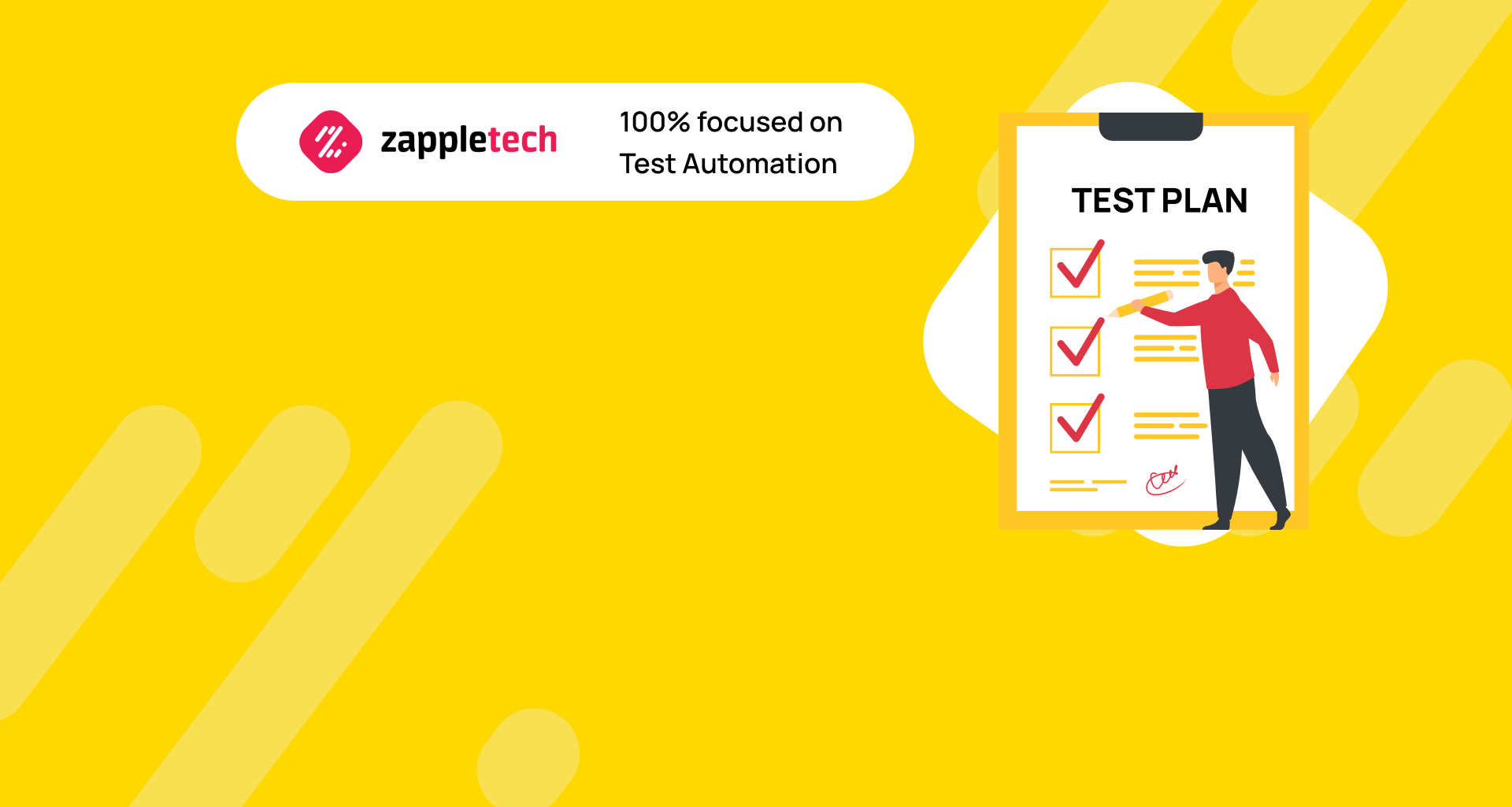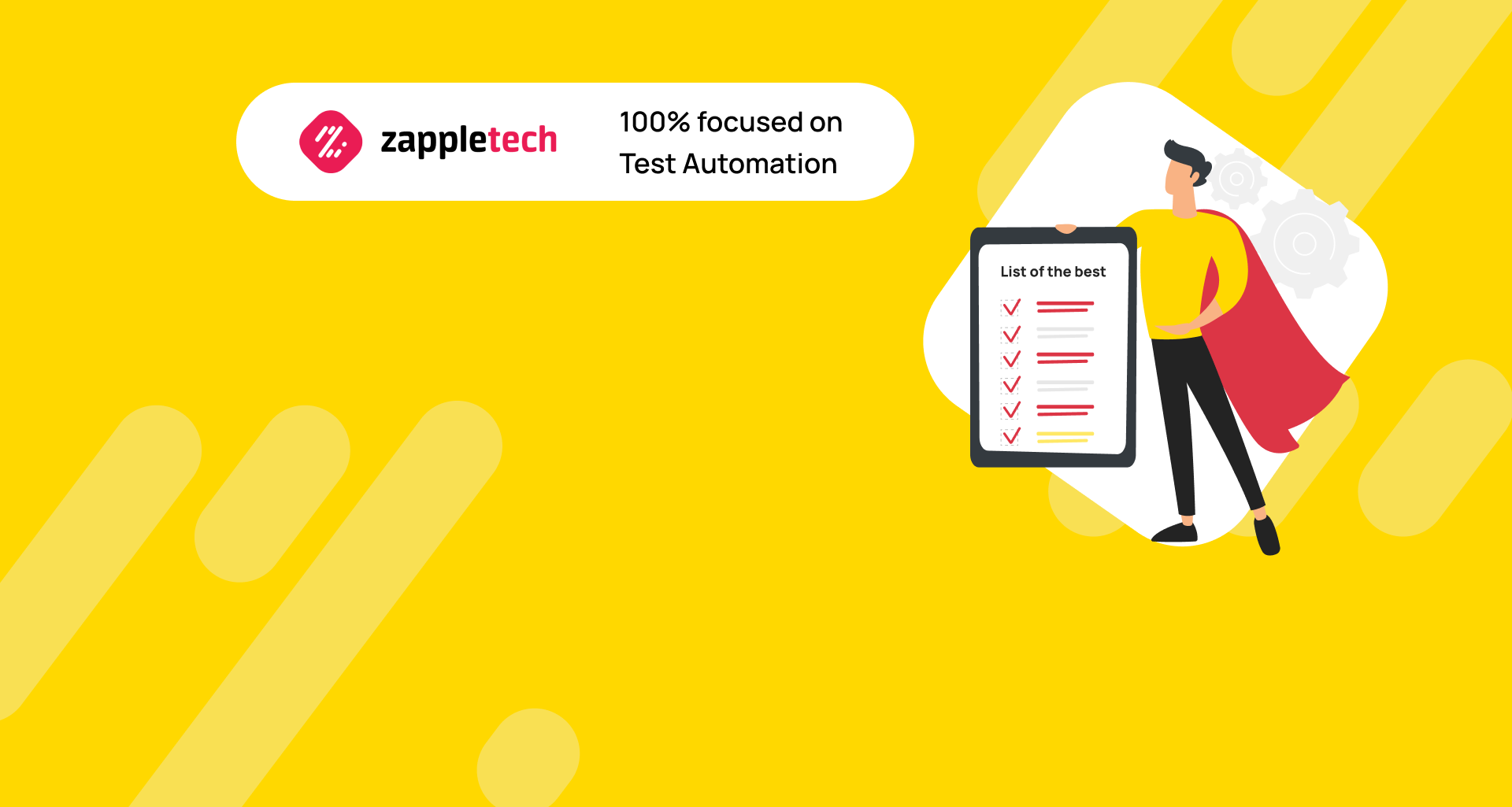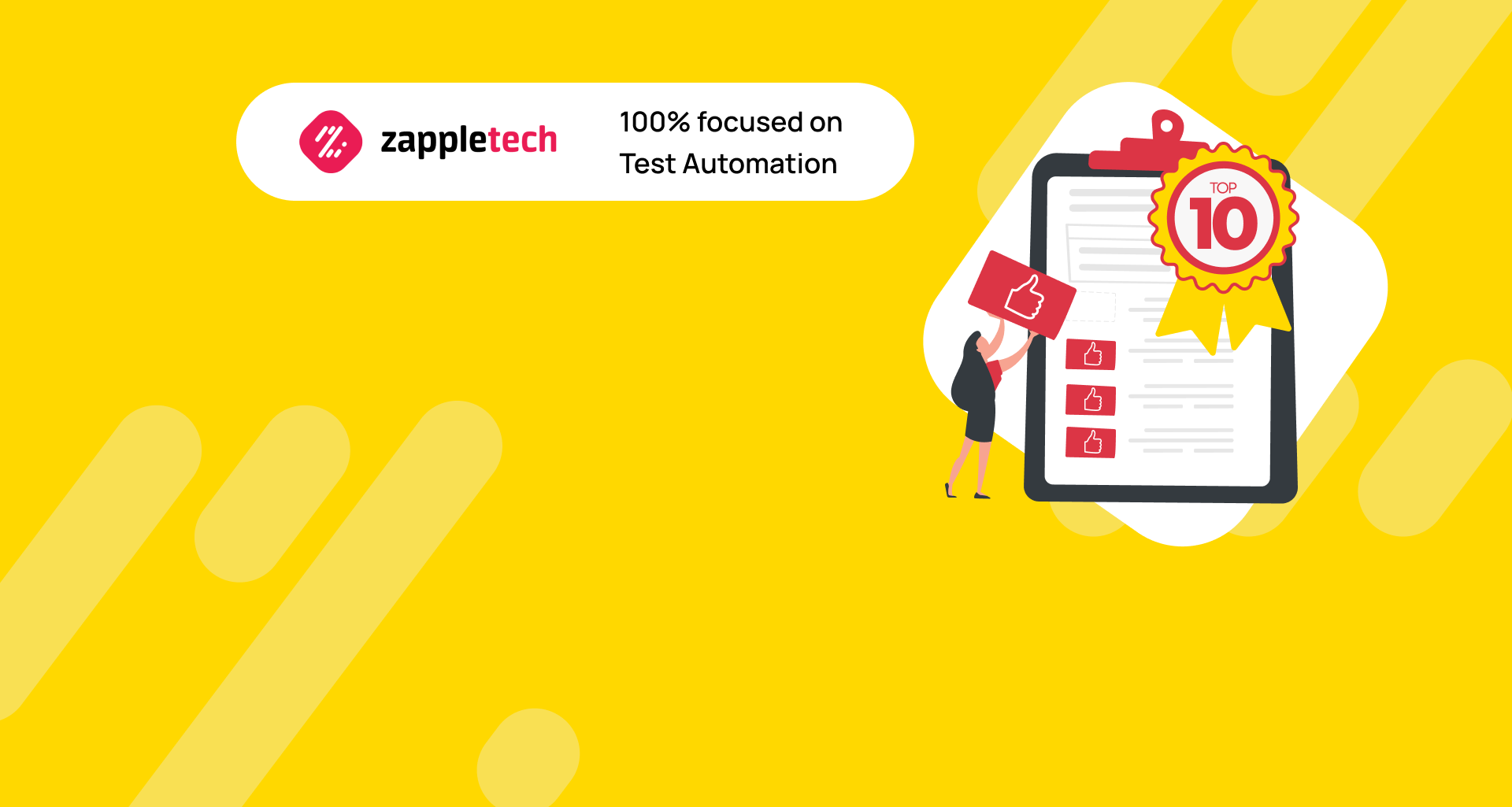Increased demand for system automation is observed in all spheres of human activity, including the IT industry. The last one actively uses functional testing automation, which simplifies the types of web applications development, software testing, and communication with staff.
In particular, organizations are working hard to improve integration methodologies. But most importantly, the central aspect of test automation has changed today: they focused on the improved coverage and effective use of test cases.
Table of Contents
What is Functional Testing Services and Why is it Important?
Functional testing is an integral part of the global QA process. Its crucial value lies in checking functions (such as GUI elements) and the operation of each software algorithm. Not properly tested functionality can transform into risks and expenses in later stages, both for developers and product owners.
In fact, this underscores the importance of functional testing for a project, regardless of its type, scale, or purpose. Just as automation of these checks through specialized tools, saving time and resources further enhances the overall efficiency of testing.
Introduction to Functional Testing
Functional testing is a crucial aspect of the software development process that ensures a software application or system meets its functional requirements and works as expected. It involves testing the software’s functionality, usability, and performance to identify defects and bugs, and to ensure that it meets the user’s expectations. Functional testing is a type of black-box testing, where the tester does not have access to the internal workings of the software, but rather focuses on the input and output of the system.
Types of Functional Testing
Functional testing can be categorized into several types, each with its own specific focus and objectives.
Smoke Testing
Smoke testing is a preliminary testing phase that determines whether a software application is stable and safe for further testing. It involves a series of high-level tests that verify the application’s basic functionality and identify any major issues. Smoke testing is typically performed at the beginning of the testing cycle and is used to ensure that the application is testable.
Integration Testing
Integration testing involves testing two or more software modules or components to ensure that they work together seamlessly. It verifies that the interactions between the modules are correct and that the data is exchanged correctly. Integration testing is typically performed after unit testing and before system testing.
Exploratory Testing
Exploratory testing is a type of testing that involves testing an application without prior planning or scripting. It involves exploring the application’s functionality and identifying defects and bugs through a series of ad-hoc tests. Exploratory testing is typically performed by experienced testers who have a deep understanding of the application’s functionality and requirements.
Detailed explanation of functional testing services
Functional testing services encompass quite a few tasks that are essential to perform and do so with the highest quality. Leveraging functional testing expertise is crucial to ensure these tasks are executed effectively. This is because the effectiveness of the process directly impacts the efficiency of the digital product. More precisely, it determines whether it will execute all the operations embedded in it.
It is crucial to apply automation, especially since functional testing services are somewhat extensive, even within the context of each specific type. There are at least eight of them here:
Modular Testing: Checking the functionality and correct operation of each element. This is done in isolation from the initial stages of the project.
Component Testing: Similar to modular testing, this involves verifying each component under isolated conditions. However, compatibility with the rest of the elements is also tested.
System Testing: End-to-end testing that ensures all components work properly and do not conflict with each other. It covers both functional testing services and compatibility.
Acceptance Testing: Checking the digital product’s compliance with requirements and user expectations. Typically achieved through testing user stories that mimic customer behavior.
Regression Testing: Testing the system’s functionality after modification or the addition of new components. It is intended to mitigate potential compatibility issues.
Smoke Testing: Assessing the stability of new components through code load testing. It includes testing only critical functions and elements.
Compatibility Testing: Examining only those code fragments that interact with new modules or components. It’s necessary for transitioning the build to the next development stage.
Integration Testing: Testing the compatibility of modules with one caveat. This testing primarily focuses on the interaction between individual components.
All the mentioned types involve a multitude of tasks and processes within the scope of functional testing services. Hence, it is more efficient to automate them rather than conducting them manually.
Why you need automated functional testing services?
The advantages of functional testing automation are apparent: and it lies in the time savings. The functional testing process can be enhanced by leveraging AI tools to automate and intelligently select and execute test cases more effectively. It’s enough to say that manual testing takes much time and resources when automatic testing requires just writing one script. However, this same advantage makes it possible to reuse this script, which optimizes the testing process quite significantly.
The key roles and skill sets required for a high-performing testing team
Regardless of how advanced the tools for functional testing services may be, the efficiency of the work primarily depends on the professionals performing the job.
For the field of Quality Assurance (QA), this issue is particularly acute because numerous freelancers and teams today cannot ensure the necessary testing quality due to a lack of experience and talent. Furthermore, there is a lack of understanding of the concept and significance of this type of testing.
That’s why it’s important to choose project performers who know the right methodology and toolkit to thoroughly assess your digital product. For example, the ZappleTech team, whose experts have been providing functional testing services for over 10 years and more. They also have a well-rounded team with specialized skills and abilities.
Team structure
First and foremost, it’s crucial to assemble experts with experience in your industry. This significantly accelerates the testing process because they will immediately understand where to look, what to test, and how to break everything that works.
Equally important is the composition of the functional testing services team, as this determines how quickly and efficiently your contractors will work. It also affects how processes are built, how work is organized, how communication is maintained, and how reporting is established.
A typical team composition to ensure maximum project efficiency includes:
Project Manager: Responsible for communication with the client’s representatives, organizing processes, developing the testing concept, and maintaining a focus on project goals.
Team Lead: Establishes internal team processes, builds schedules, assigns responsibilities for specific tasks, and monitors work results.
1-2 Senior QA Engineers: Develop core testing scenarios, write algorithm code, set up and deploy testing environments, document tests, and oversee the team’s work.
Middle QA: Direct executors (usually three to ten team members, depending on the project’s scale) who write test cases and reports, prepare tasks for developers, and create documentation.

A comparative analysis of outsourcing functional testing services versus in-house testing
First of all, let’s look at the critical differences between the two types of functional testing services:
| In-House | Outsource |
|---|---|---|
Experience | Familiar with products of a specific segment | Work with all common industries and product types |
Skills | Acquainted with specific tech stacks and tools | Work independently of the tech stack, using advanced tools |
Versatility | Knowledgeable in methods and concepts relevant to a specific type of IT solutions | Actively evolve, mastering innovative work methods |
Speed | Work according to a schedule, combining core processes and testing | Focus solely on your project, applying maximum testing expertise |
Scalability | It is challenging to quickly find and hire a specialist that matches your needs | Talents can join the project within days |
Availability | Need to integrate testing processes with daily routines | Dedicate exclusive focus to your project and work solely on it |
Quality | Work to achieve the best possible results | Efficiently track and resolve issues in the digital product |
Flexibility | It is challenging to switch between tasks, longer adaptation to changes | Instant integration into the project and building organic cooperation |
Cost | Workplace organization, training, equipment, fixed salary, regardless of workload | Pay only for services provided by contractors |
In addition to functional testing, non functional testing is crucial as it evaluates aspects such as performance, reliability, and usability, ensuring a comprehensive assessment of the software’s overall quality and effectiveness.
The only exception is companies that provide QA services, but even in such cases, team expansion, i.e., functional testing services through outsourcing, may be necessary. Therefore, we suggest looking at the key advantages of this method of collaboration.
Benefits of outsourcing
We’ve discussed this issue several times but in a slightly different context. Today, we’ll discuss precisely the advantages of outsourcing functional testing services.
To ensure that software products meet functionality standards after each iteration, it is crucial to perform functional testing as a key part of the Agile development process.
And they are evident:
Choice of Executors: You can use services from Middle-level professionals and hire Seniors as individual contributors or whole teams.
Cost Flexibility: You can delegate your project to India, significantly reducing QA costs, or opt for North America, paying for services at a premium rate.
Service Quality Choice: You can delegate work to newcomers and get fairly average results or entrust it to professionals, ensuring the highest product quality.
Cost Optimization: You don’t have to worry about renting office spaces, purchasing equipment, or staff training. All costs are associated only with the volume of work.
Risk Management: Complete projects on time, release high-quality products, and achieve a positive ROI with the expertise of functional testing services experts.
This is only in a general sense, so let’s take a closer look at some of the advantages of this collaboration model.
Cost-efficiency
Pay only for the work done. With outsourcing, this is possible, as the logistical and equipment aspects of the QA team are handled by the company, providing you with talent for the project.
In other words, there are no costs for logistics, equipment, training, or technology. Only a clear budget for the services provided—always calculated individually.
The price includes a certain buffer to compensate for some nuances, but these are modest amounts compared to hiring experts in-house and maintaining a full team.
Access to specialized expertise
For functional testing services, you need specialized professionals who can be trained or temporarily hired as a team or delegated to an outsourcing company.
This is indeed an advantage of outsourcing, as this model provides instant access to the best talents on the market at a fairly modest cost and without additional expenses. The key point: experts stay with you until the project is completed and closed, without being distracted by unrelated tasks or products.
Scalability
Even if you already have an in-house QA team, outsourcing functional testing services can be beneficial, especially if you want to meet deadlines without overburdening your own experts.
Furthermore, this is an excellent opportunity to quickly and efficiently expand your team without additional costs. You can add professionals to the project at any time by simply reformatting the contract with the outsourcing company. This is an optimal way to work without losing productivity, especially when combined with the best methodologies and practices to achieve maximum quality.
Tips and best practices to optimize testing costs without compromising quality
There is a rather interesting methodology in software testing that allows you to save costs while consistently achieving maximum testing results. It’s optimization through focusing on critical functionality.
The concept involves organizing tests on the critical functionality necessary for the proper operation of a digital product. Initially, you ensure the proper functioning of the core elements for rapidly deploying your IT solution in the market. Later, you monetize it and address minor or insignificant bugs.
However, it’s important to remember risk-based testing, which also helps optimize costs for functional testing services.
Risk-based testing
If you’re familiar with risk management concepts, you know risks can be identified, described, localized, and mitigated. The same concept is applied to functional testing services.
First, you need to establish the project’s goals, its specifics, and advantages. Then, you should look at the product through the eyes of typical users. This allows you to identify critical functionality and algorithms. Based on this information, you should focus your efforts on testing the system’s most crucial components.
Mikhail Bodnarchuk
CDO, ZappleTech Inc.
This doesn’t mean that you should ignore other issues or avoid finding and fixing them. It just means that if they don’t impact the user experience, you can address them later, reducing costs for functional testing services.
However, this is only possible with highly effective and constant communication among all project stakeholders.
Strategies for fostering effective communication among team members
A team includes not only the QA professionals you’ve hired but also developers, project managers, business analysts, and stakeholders. In other words, everyone involved in the digital product is focused on the project’s goals and its value for the end-users and beyond. All these professionals need to have the means to communicate regularly, possibly through team leaders.
Effective communication is crucial for delivering high-quality software testing services, ensuring that all team members are aligned and working towards the same objectives.
This way, you maintain control over the project with functional testing services and optimize the work of all departments. You’ll need specialized tools and methodologies to build seamless communication to achieve this.
Collaboration tools and methodologies to streamline communication
While the QA toolkit is essential, you must also consider communication and collaboration systems. For instance, IT solutions like Slack, Zoom, Jira, Jenkins, etc.
The key goal of applying these products in functional testing services is to synchronize work processes and their outcomes and establish a continuous development/testing cycle. They also help avoid various common and not-so-common QA challenges.
Common challenges faced in functional and regression testing projects
Most issues in IT projects, including those related to functional testing services for digital products, stem from a single cause—a misunderstanding of the project’s concepts and goals by the team. In such cases, the term “loss of focus” comes into play, leading to a shift in QA priorities, often ignoring truly essential aspects of these processes.
Effective test data management is crucial for successful testing outcomes, ensuring accuracy and completeness during testing.
Imagine a situation where you’re developing a mobile money transfer app. You’ve implemented a payment gateway, encryption protocols, design, and additional features like card management. The time has come to release it to the market, but the money transfer feature i
Practical solutions for exploratory testing
First and foremost, it’s essential to prioritize the critical components and modules of the system your team will focus on.
Next, you need to establish a process of constant communication, particularly with business analysts and stakeholders. This is crucial to maintain focus during functional testing services.
You should actively collaborate with the development team and project managers to synchronize testing and development processes and understand work plans and deadlines.
It’s also beneficial to use tools that integrate with CI/CD systems. This way, you can establish uninterrupted development and functional testing services processes.
A comprehensive list of industry-standard tools and technologies for functional testing
To help you navigate through practical tools for functional testing services, we’ve curated the best ones. By the way, we use some of them either in a testing mode or regularly.
User acceptance testing (UAT) is a critical phase in the software development process, focusing on validating functional requirements through real user interactions prior to deployment.
If you wish to swiftly and effectively test digital products, regardless of their level of readiness, these digital solutions are tailored to meet such requirements.
Selenium
This tool is known as one of the most popular functional testing tools for web applications. Moreover, it takes top place in the list of the most important and demanded tools for automation and web testing.
Selenium is considered the ancestor of several other testing tools, including Robot Framework, Watir, Protractor, Katalon Studio. The coders can write scripts for integration testing the framework on Python, C#, PHP, Java, and others.
Selenium is flexible enough and supports Linux, Windows Mac, and many popular browsers, including Firefox, Headless browsers, IE, Chrome.
The main Selenium properties are:
Create complex and advanced automation scripts.
Creation of a base that will also be available for other automated testing tools.
Parallel execution of the test with an accompanying reduction in time.
As for the disadvantages, this is the need for a highly qualified specialist. Thus, an automation tester must have advanced knowledge in software development and be ready for the time-consuming writing of special libraries and frames that provide the necessary functions in the process of automated regression testing.
Appium
Initially, Sauce Labs developed a cross-platform open-source tool to automate website testing for their native mobile apps. It’s known that this is one of the most demanded frameworks from arsenal of dedicated QA team, which allows testing several devices at once. Moreover, it is used for different web apps, including native and hybrid ones. And if just a few updates ago Appium supported web apps only, then now it is suitable for desktop apps.
As for Appium features and advantages, then they are as follows:
Open-source.
Strong community.
Multi-platform support.
Parallel testing.
Support for many programming languages, including
Python, PHP, Ruby, C #, Java and JavaScript, etc.
Selenium client library support.
Also, you should consider a couple of nuances, like a little slow work due to its dependence on the remote web server driver and some difficulties with parallel testing on Mac devices.
Cypress
Many experts argue that it’s not easy to find a simpler functional automated testing tool than Cypress. It has extensive documentation written in simple language and provides API descriptions, helpful guides from the developer project, and configuration settings.
In addition, the tool also boasts excellent documentation and a number of advantages:
Easy to install and fast.
Test runner, which is an excellent tool for the debugging process.
Great development experience.
It is also worth noting that this is an ideal framework for those who are just trying their hand at test automation. But, of course, it has its drawbacks, such as the problem with submitting the form data and the cross-origin error. Cypress also does not allow you to run tests in several tabs at the same time and switch to other resources.
Playwright
This is another worthy alternative for Microsoft’s Selenium. It allows you to test not only in JavaScript but also in Python and C #. Again, it’s open-source and great for end-to-end testing.
The features and advantages are following:
Single API.
High speed.
Wide coverage.
Excellent accuracy.
No restrictions on iFrame, Cross-Origin.
Ability to upload and download files.
Generating and writing scripts through CodeGen.
Allure Report feature integration.
Support for Java and JavaScript, Python, .NET, and more.
Ability to write cross-browser tests.
Safari testing is also characteristic of the Playwright. Automation is also possible here for single-page applications that rely on a modern, web application platform.
So, the tool offers quite wide opportunities, adding new functionality testing features for testing.
Mocha
Mocha was originally developed for Node.js in 2011. It is now a popular functional testing automation tool that can also be used in front-end testing.
Flexibility.
Lots of tools and features.
An active community that will always support and advise.
Ability to select libraries, assertion, mocking, and spy libraries you want to use.
Powerful open-source libraries like Chai and Sinon.
Mocha is a great tool for those who have a large project and need additional settings and configurations.
Jest
Two functional automation testing tools are quite often opposed to each other: these are Mocha and Jest. In this case, this framework was created for Java Testing script and allowed simultaneous testing of operating systems.
It is also worthy for several reasons:
Excellent documentation with lots of examples supported by the community.
A friendly, helpful community that provides advice via Discord or Stack Overflow.
Isolation of tests.
Extensive API.
Interactive mode for easy running of all necessary tests.
Easy mocking.
Snapshot testing.
And what’s nicer, it works right out of the box; that is, it does not require any additional settings. It’s easy to stop and control.
Robot Framework
It is a keyword-driven framework explicitly designed for test automation. It is written in Python, but it is usually enough for writing tests to use ready-made keywords embedded in this framework without resorting to programming in Python.
You just need to load the necessary libraries, such as Selenium Library, and write a test.
It also has many significant advantages, namely:
Low entry threshold.
The ability to set tags for tests.
Automatic reports creation.
Parallel launch.
BDD out of the box.
Of the minuses, we can single out poor third-party libraries’ support or, for example, the absence of the possibility of debugging with built-in tools.
TestNG
Cédric Beust has created a framework that will become the Next Generation of functional automation testing tools. TestNG is what will help make your tests more structured and provide better validation points for functional tests.
It is also remarkable in the following points:
Powerful and varied annotations to support your test cases.
Parallel execution of tests, use of dependencies between tests.
Flexibility to run your tests on different datasets, through the TestNG.xml file or through the data-provider concept.
Grouping and prioritizing test cases.
Generation of HTML reports, customization using various plugins.
Generation of test execution logs.
Easy integration with Eclipse, Maven, Jenkins, etc.
In essence, it is an annotation-based testing framework that overcomes some of the shortcomings of JUnit by adding features like flexible devices, test classification, parameter testing, and dependent methods.
Selenide
In short, Selenide is a tool for automating user actions in a browser, focused on the convenience usability testing and ease of implementation of business logic in autotests in the user’s language.
Its key features are:
Concise jQuery-style syntax.
Automatically resolve most Ajax, wait and timeout issues.
Browser life management.
Automatic screenshots.
Selenide’s goal is to focus on the business logic of tests and not waste mental energy on technical details security testing.
Cucumber
Cucumber is a free, flexible, and functional BDD web application testing tool that is open source. It applies to functional testing tools for web applications only.
It is built with simple test code (Gherkin) and compatible with different frameworks like Selenium or Ruby. This functional automated testing tool is in demand by serious users such as PayPal and Canon.
What points to consider in order to select the right tool for functional automation testing?
When embarking on the selection of tools for functional automation testing, several pivotal factors should guide the decision-making process. While initial checks are conventionally performed manually to validate results, the transition to automated testing is essential for enhancing scalability and efficiency throughout software development projects.
Automated functional testing involves the refinement and consolidation of test cases initially created during project development into streamlined, automated algorithms. This transformation not only accelerates testing cycles but also elevates test coverage and reliability, ensuring thorough validation of software functionalities across diverse scenarios and use cases.
The selection of software for functional automation testing hinges on several critical considerations:
Project-specific Requirements: Understanding the unique testing needs and goals of the project is foundational. Projects may necessitate support for web applications, mobile apps, or desktop software, influencing the choice of testing tools such as Selenium for web automation or Appium for mobile automation.
Technical Proficiency: The proficiency of the testing team in utilizing different tools is pivotal. Frameworks like Cypress may be favored for their user-friendly interface and rapid deployment capabilities, while Selenium’s robust feature set and adaptability to complex testing scenarios make it suitable for more technically demanding projects.
Integration Capabilities: Seamless integration with existing development workflows and Continuous Integration/Continuous Deployment (CI/CD) pipelines is essential. Tools offering robust APIs and plugins compatible with popular CI/CD platforms like Jenkins or GitLab facilitate efficient test execution, automated reporting, and streamlined collaboration across development and testing teams.
Scalability and Maintenance: Consideration should be given to the scalability of the testing framework and its ease of maintenance. Frameworks supporting parallel testing, cloud-based execution, and centralized test management capabilities help optimize resources and streamline testing efforts as project scopes and complexities evolve over time.
Community Support and Updates: Active community support, frequent updates, and a thriving ecosystem of plugins and extensions are indicative of a testing tool’s longevity and effectiveness. Access to timely support, new features, and enhancements aligned with evolving industry standards ensures ongoing compatibility and optimization of testing practices.
Current testing needs
The stage of the product’s development and its modules determine the tools that are more appropriate to use. For example, if the project is in its early development stages, you can immediately deploy the Selenium environment and establish the future testing architecture. The same goes for regression, as the framework works well with comprehensive tests.
However, you can use tools like Cypress or Playwright when you need to quickly check a specific element without conducting a full testing cycle (which can be time-consuming and inefficient). In other words, create a simple algorithm or even test the component manually, which can sometimes be more practical.
Product specifics
The scale, modularity, and internal communications within the software also influence the choice of tool. If you need to work with a specific module autonomously, you can use Selenium and create “stubs” for the API. Alternatively, you can comprehensively test the system using the same framework.
Overall, each tool is situational, so its choice depends on the project’s current needs, expert preferences, and cost-effectiveness, which can indicate the suitability of a particular testing suite.
Timeframes
In any case, testing requires time. The more complex algorithm you run, the more cycles you specify, and the longer the testing process takes (even within automated functional testing services).
The testing time depends to some extent on the toolset, so it’s not entirely practical to single out a specific framework as more or less productive.
Mykhailo Poliarush
CEO, ZappleTech Inc.
However, if you truly need to reduce testing time, we recommend using comprehensive tools like Selenium and building “lightweight” algorithms within it that the program can quickly process.
Global differences between the tools provided in this article
In a global context, the tools discussed in this article serve distinct purposes and cater to varied requirements in terms of workflows, supported algorithms, scripting languages, and integrations. Despite these differences, all the mentioned frameworks excel in automating functional testing services, ensuring robust validation of software functionalities across different applications and platforms. The choice of framework often boils down to the expertise and specific needs of the testing team.
Why choosing the right tool is so important?
If you need truly comprehensive test coverage for a digital product, you’re unlikely to do without tools and automated checks. This is a key reason and factor in the importance of the IT solutions described here. Additionally, using specialized suites offers several advantages over traditional manual testing.
Testing Efficiency
The concept of efficiency is inherent in all modern industries. It is of particular importance in development and QA, as it is one of the key metrics that characterize efficiency.
Manual testing or automation with standard development suites cannot achieve the same efficiency level as specialized toolsets.
With platforms (frameworks) like Selenium, experts can configure comprehensive testing algorithms and modify them as needed. This leverages software potential to optimize the workflow.
Resource and Budget Savings
Manual testing often requires many specialists (depending on the project’s scale), whereas automation only requires one engineer. Initial checks (as well as control checks) are conducted manually, but routine tasks are programmed into automation algorithms (such as in Selenium).
This provides several advantages: it reduces the number of specialists involved in the project, decreases personnel-related costs, and enhances work quality.
Risk Mitigation
Every error (bug) in a product incurs costs. The further along in the project, the more expensive it becomes to identify and rectify the issue.
Specialized testing tools improve product quality and reduce the risks of potential financial losses or damage to reputation.
The IT solutions from this material allow testing to be deployed even in the early stages of development and meticulously assess each software element. Covering up to 100% of program components ensures that bugs are detected and localized promptly. The key is to have these processes carried out by professionals.
In-house vs. Outsourced dilemma in functional testing
Often, the question arises whether to hire in-house personnel to provide automated functional testing services or outsource this work to external experts. Both solutions are optimal, but outsourcing does offer certain advantages. For example:
A specialized automation testing company has more industry experience in QA.
External teams are formed according to the specific project’s needs (based on skills, experience, and toolset).
No expenses for logistics, rentals, staffing, equipment purchase, technology, etc.
The ability to work with more cost-effective regions without compromising service quality.
The organization of multiple parallel teams for working on large-scale projects.
And these are just some of the benefits that even SMBs can get by outsourcing QA tasks to experts. However, it’s important to choose the right contractor to avoid situations where a company might face issues due to the actions of incompetent testers.
Tips for choosing a good contractor
There are instances when you delegate a project to “experts,” and they fail to carry out their responsibilities, their effectiveness doesn’t match the cost of hiring them, and so on. Consequently, such collaborations can lead to reputation issues or financial problems for the company (requiring product retesting). Doesn’t sound pleasant, does it?
But don’t worry; we’ll guide you on how to correctly choose a contractor who will successfully handle your QA project.
Portfolio Review
First and foremost, you should visit the team’s website and review their case studies. These generally showcase the professionals’ actual level of experience and skills, as well as their readiness to work across different industries.
Pay attention to the tech stack used by the testers, project completion time, team size, and more. This will serve as an indicator of whether the service provider meets the needs of your product or whether you should consider other experts.
Budget Allocation and Priorities
Services from strong teams come at a significant cost, and that’s a fact. Therefore, ensure that your budget can accommodate the expenses associated with comprehensive QA. Does this mean you should look for providers offering lower-quality services? No, and here’s why:
Modern QA market players offer clients personalization, meaning they tailor a tariff and service package optimal for the client and their budget.
Sergey Almyashev
COO, ZappleTech Inc.
So, if you approach ZappleTech with a QA project, you’ll receive quality assistance that’s budget-friendly, regardless of your current financial constraints.
Reviews from Previous Clients
Platforms like G2, TrustPilot, DesignRush, and others host reviews about company performance. Accordingly, you can find a team that interests you and check their rating.
By learning more about potential contractors’ methods and quality of work, you can make an informed decision about outsourcing the project. Or, you can save time and stress by entrusting the work to niche experts, the ZappleTech team.
Why is it better to order this kind of service in company ZappleTech?
The company has been executing commercial projects for over 10 years. Approximately 99% of clients have been satisfied with the services during this time, and some collaborations have transformed into partnerships.
With over 100 completed developments, an equal number of support projects, proficiency in working with all current methodologies and tools, and flexible pricing, we offer all of this to potential ZappleTech clients.
Want to maximize the quality of your IT product’s implementation? Entrust its testing and support to industry QA experts, the ZappleTech team! Reach out to a manager to discuss the details of our future collaboration!
Functional Testing Tools for Automation Testing: Final thoughts
We all understand that there are no perfect functional automation testing tools. However, we have many tools today to speed up testing without hours of tedious work.
The IT industry offers dozens of types of functional testing and automation tools; some of them are considered as best ones:
Selenium;
Appium;
Cypress;
Playwright;
Mocha;
Jest;
Robot Framework;
TestNG;
Selenide;
Cucumber.
Many of them are open source, compatible with a lot of programming languages and applications.
But for your business processes to be optimized in the right way, you also need a team of experienced specialists and testers that know how to use functional automation tools correctly. And we will help you solve all the tasks related to performance testing and, automation, and optimization of business processes at once.
Сonclusion
In conclusion, navigating the landscape of functional testing services requires a strategic approach to ensure optimal software quality and user satisfaction. The choice of tools and methodologies plays a pivotal role in achieving comprehensive validation of software functionalities. Automated frameworks like Selenium offer efficiency in repetitive tests, allowing teams to focus on complex scenarios and edge cases that require manual intervention. This blend of automated and manual testing not only enhances test coverage but also identifies critical bugs early in the development lifecycle, reducing costs and time-to-market.
Moreover, the evolution of DevOps practices has underscored the importance of integrating testing seamlessly into the continuous integration and delivery pipelines. By adopting continuous testing frameworks and leveraging cloud-based solutions, teams can scale testing efforts dynamically while maintaining high standards of accuracy and reliability across different environments. This approach not only accelerates feedback cycles but also facilitates rapid iteration and deployment of software updates.








